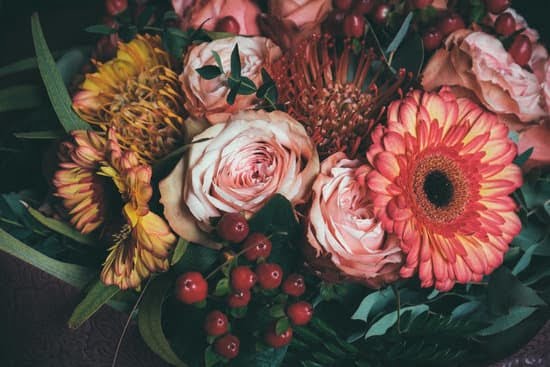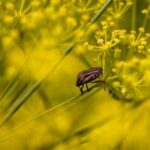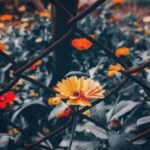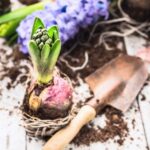Welcome to our article on butterfly garden design layout. As the trend of creating butterfly gardens continues to grow, it’s important to understand the benefits and beauty that these gardens bring. In this section, we will explore the reasons why butterfly gardens are becoming increasingly popular and the advantages they offer.
Butterfly gardens are not only visually stunning but also play a crucial role in the conservation and preservation of these delicate creatures. With habitat loss, climate change, and pesticide use threatening butterfly populations, creating a butterfly garden provides a safe haven for them to thrive. By planting native plants that provide food and shelter, you can attract a variety of butterfly species and contribute to their survival.
In addition to conservation efforts, butterfly gardens also offer numerous personal benefits. These enchanting spaces bring delight and tranquility, providing a peaceful escape from the stresses of daily life. From watching butterflies gracefully flutter about to observing their intricate behavior, engaging with these pollinators can be a rewarding and educational experience for both adults and children.
Join us as we delve into the world of butterfly gardens and discover how to create your own personalized oasis for these remarkable creatures. By incorporating specific elements such as plant selection, water features, and maintenance techniques, you can design a beautiful space that attracts an array of butterflies while contributing positively to both the environment and your well-being. So let’s embark on this journey together.
Understanding the Basics
Butterfly gardens are not only beautiful additions to outdoor spaces, but they also play a crucial role in the conservation of these delicate creatures. Before diving into the design and layout of a butterfly garden, it’s important to understand the basics of butterfly species and their specific needs.
There are thousands of different butterfly species worldwide, each with its own unique characteristics and requirements. Some butterflies prefer open meadows and grasslands, while others thrive in moist, woodland areas. Understanding the habitat preferences and food requirements of different butterfly species is essential for creating a successful butterfly garden.
When planning your butterfly garden, identify which butterfly species are native to your region. Native plants are best suited for attracting local butterflies as they have coevolved together and provide the necessary nectar sources and host plants. Research local field guides or consult with local gardening centers or experts to determine which butterflies you can expect to see in your area.
In addition to specific habitat preferences, it’s important to provide a variety of nectar-rich flowers that bloom throughout the seasons to attract a diverse range of butterflies. Consider incorporating native wildflowers such as asters, coneflowers, milkweed, and goldenrod that are known to be favorites among many butterfly species.
By understanding the basics of butterfly species and their needs, you can create a butterfly garden that caters to their specific requirements. Providing the right habitat conditions and selecting appropriate nectar-rich plants will attract a wide array of butterflies to your garden, enhancing its beauty while contributing to important conservation efforts.
Choosing the Right Location for Your Butterfly Garden
When it comes to creating a successful butterfly garden, choosing the right location is crucial. Butterflies are highly sensitive creatures that require specific conditions in order to thrive. By providing them with the ideal environment, you can attract a wide variety of species and enjoy the beauty they bring to your garden.
The first consideration when selecting a location for your butterfly garden is sunlight. Butterflies need plenty of sunlight to regulate their body temperature and energy levels. Aim for at least six hours of direct sunlight each day in the area you choose for your garden. Avoid areas that are heavily shaded by trees or buildings, as this can limit the amount of available sunlight.
In addition to sunlight, wind also plays a role in a successful butterfly garden. Butterflies prefer gentle breezes and avoid areas that are excessively windy. When choosing a location, look for an area that is protected from strong winds, such as near tall shrubs or fences.
Water sources are another important aspect to consider when selecting a location for your butterfly garden. Butterflies require access to water for drinking and bathing. You can provide water through various means such as birdbaths or shallow ponds. Including these features in your garden will not only benefit butterflies but also attract other wildlife.
By taking into account these factors – sun exposure, wind conditions, and water sources – you can choose the right location for your butterfly garden and create an inviting space where butterflies will thrive.
| Factor | Considerations |
|---|---|
| Sunlight | Aim for at least six hours of direct sunlight per day |
| Wind | Choose an area protected from strong winds |
| Water Sources | Provide birdbaths or shallow ponds for drinking and bathing |
Preparing the Soil
In order to create a successful butterfly garden, it is essential to properly prepare the soil. The quality of the soil plays a crucial role in providing the perfect environment for butterflies to thrive. By following some simple guidelines, you can ensure that your garden will attract a wide variety of butterfly species.
One important aspect of soil preparation is improving its quality and drainage. Butterflies prefer well-drained soil that is rich in organic matter. This can be achieved by adding compost or aged manure to the soil before planting. These organic materials not only improve soil structure but also provide essential nutrients for plant growth. Additionally, incorporating organic matter into the soil helps retain moisture and promotes healthy root development.
It is also crucial to remove any weeds or unwanted vegetation from the area where you plan to create your butterfly garden. These plants compete with your desired butterfly-friendly plants for nutrients and water, hindering their growth. Take the time to thoroughly remove any existing vegetation by hand or use an appropriate herbicide if necessary.
To ensure optimal conditions for butterflies, it is recommended to test the pH level of your soil as well. Most butterflies prefer slightly acidic to neutral soils with a pH range between 6 and 7. If necessary, you can make adjustments using lime or sulfur based on the recommendations from your soil test.
By taking these steps to prepare your soil adequately, you will create a welcoming environment for butterflies and increase their likelihood of visiting and staying in your garden. Remember that healthy plants attract more butterflies. So put some effort into preparing the soil properly and enjoy watching these beautiful creatures fluttering around your garden all season long.
Selecting Butterfly-Friendly Plants
When creating a butterfly garden, one of the most essential aspects to consider is the selection of butterfly-friendly plants. These are the flowers and plants that provide nectar for butterflies, acting as a vital food source for them. By including these must-have plants in your garden, you will not only attract more butterflies but also provide them with the sustenance they need to thrive and reproduce.
The Importance of Selecting Nectar-Rich Flowers
The primary goal when selecting butterfly-friendly plants is to choose those with abundant nectar sources. Nectar is a sugary fluid produced by flowers that serves as a fuel for adult butterflies. By feeding on nectar, butterflies gain the energy they need for various activities such as mating and migration.
When choosing nectar-rich flowers, it’s important to consider their bloom time. Butterflies have different flight periods throughout the year, so incorporating a variety of flowering plants will ensure a continuous supply of nectar from early spring to late fall. Additionally, selecting flowers in different shapes and sizes will attract a diverse range of butterfly species with varying preferences.
A Comprehensive List of Butterfly-Attracting Plants
There are numerous plant options that are known to attract butterflies to your garden. Some popular choices include:
1. Milkweed: As the sole host plant for monarch caterpillars, milkweed is an absolute must for attracting monarch butterflies.
2. Purple Coneflower (Echinacea): This perennial flower is not only attractive to butterflies but also beneficial for pollinators.
3. Lantana: This colorful flowering plant produces abundant nectar and attracts various butterfly species.
4. Black-eyed Susan: With its vibrant yellow petals and cone-shaped center, this flower is highly attractive to both butterflies and bees.
5. Butterfly Bush: True to its name, this shrub-like plant is well-known for its ability to attract numerous species of butterflies.
Other excellent choices include asters, salvia, phlox, and zinnias. By incorporating a mix of annuals and perennials, you can create a garden that will attract butterflies throughout the entire growing season.
Remember to choose native plant species whenever possible, as they often have co-evolved with local butterfly populations and provide the most suitable nectar sources. Researching which plants are native to your region will greatly assist in attracting a wider range of local butterfly species to your garden.
Designing Your Garden
One key aspect of designing your butterfly garden is diversity in plant selection and arrangement. Butterflies are attracted to a variety of nectar-rich flowers, so it is important to include a diverse range of plants in your garden. This can include flowers with different colors, shapes, and heights.
By providing a variety of choices, you can attract a wide range of butterfly species. Additionally, arranging the plants in clusters or patches can make it easier for butterflies to locate the nectar source.
Another tip for designing your garden is to create different levels and areas within the space. This can be achieved by using larger trees or shrubs as anchors, and then filling in the gaps with lower-growing perennial flowers or grasses. This creates layers within the garden, which allows butterflies to navigate easily and find suitable feeding spots. It also adds visual interest to your garden design.
In addition to plants, consider adding other features that will attract butterflies to your garden. For instance, you could incorporate butterfly feeders filled with sugar water or ripe fruit to provide additional food sources. You could also use scents that attract butterflies such as lavender or marigold. These features can further enhance the attractiveness of your garden and increase the chances of attracting a greater diversity of butterfly species.
By carefully designing your garden with a focus on diversity and creating different levels and areas, you can create an inviting space that will attract butterflies and provide them with the resources they need to thrive.
| Aspect | Tips |
|---|---|
| Diversity in plant selection | Include a range of nectar-rich flowers with different colors, shapes, and heights. |
| Arrangement of plants | Arrange the plants in clusters or patches to make it easier for butterflies to find. |
| Creating different levels | Use larger trees or shrubs as anchors and fill gaps with lower-growing perennial flowers or grasses. |
| Incorporating additional features | Add butterfly feeders filled with sugar water or ripe fruit. – Consider using scents that attract butterflies, such as lavender or marigold. |
Incorporating Water Features
Water plays a crucial role in the survival of butterflies, making it essential to incorporate water features into your butterfly garden design. Butterflies require water not only for drinking but also for other important activities such as mating and cooling their bodies. By providing a reliable and accessible water source, you can attract a wide variety of butterfly species and create a thriving habitat for these beautiful creatures.
The Importance of Water Sources for Butterflies
Water is an essential component of a butterfly’s diet, as they obtain nutrients from various sources including nectar, juices from rotting fruits, tree sap, and even damp soil. In order to access these nutrients, butterflies need to extract liquid through their proboscis. It is crucial to provide shallow pools or puddles that allow them to access water easily without drowning. These water sources not only contribute to their hydration but also provide essential minerals and nutrients unavailable elsewhere.
Ideas for Incorporating Water Features
There are several ways to incorporate water features into your butterfly garden that will meet both the needs of the butterflies and enhance the overall beauty of the space. One popular option is the use of birdbaths or shallow ponds placed strategically throughout the garden. These shallow water sources provide butterflies with a place to rest and drink while attracting other wildlife as well.
Another idea is to create small watering stations using items such as shallow dishes or plates filled with clean water and added rocks or pebbles for perching spots. Remember to refill these watering stations regularly, especially during hot summer days when evaporation occurs more rapidly.
Additionally, consider adding leaf misters or sprinklers near plants favored by butterflies. The fine droplets produced by misters mimic rainfall, attracting butterflies who are naturally drawn to areas with moisture.
By incorporating these water features into your butterfly garden design, you are not only providing vital resources for butterflies but also creating a visually appealing and dynamic space that will attract a diverse range of butterfly species.
Remember, the key to successful butterfly gardening is to create an environment that meets their specific needs. With proper water sources in place, you can enjoy the sight of beautiful butterflies fluttering around your garden while ensuring their survival and contributing to the conservation of these delicate creatures.
Maintenance and Care
Maintaining and caring for a butterfly garden is essential to ensure its continued success and the well-being of the butterflies. By following a few simple maintenance and care tips, you can keep your butterfly garden thriving and create an environment that is welcoming to these beautiful creatures.
One important aspect of maintaining a butterfly garden is regular pruning. Pruning helps to control the growth of plants, prevents overcrowding, and allows for better air circulation. It is recommended to prune dead or damaged plant parts regularly to keep the garden neat and tidy. However, it is crucial to avoid pruning during peak butterfly activity as this may disturb their habitat and feeding patterns.
Another vital aspect of maintenance is controlling weeds in the garden. Weeds can compete with the nectar-rich flowers that are essential for butterflies, so it’s important to remove them regularly. Manual weed removal or using organic weed control methods are recommended to avoid harming the butterflies or beneficial insects in the garden.
Fertilizing your butterfly garden can also contribute to its overall health and vitality. However, it is crucial to choose organic fertilizers that are safe for butterflies and their caterpillars. Avoid using chemical fertilizers or pesticides, as they can be harmful or even fatal to these delicate creatures. Organic compost or slow-release fertilizers are great options for providing nutrients without causing harm.
By following these maintenance and care tips, you can create a thriving butterfly garden that provides a sanctuary for these enchanting insects. Regularly tending to your garden will not only keep it looking beautiful but will also ensure that it remains a valuable habitat for butterflies throughout their life cycles. So roll up your sleeves, put on your gardening gloves, and enjoy the rewards of nurturing a flourishing butterfly haven in your own backyard.
Attracting Butterflies
Once you have set up your butterfly garden and have seen some beautiful species visiting your space, you may wonder how you can attract even more butterflies. There are a few additional strategies you can implement to make your garden an even more inviting habitat for these fascinating creatures.
One effective way to attract more butterflies is to include butterfly feeders in your garden. These feeders typically consist of a shallow dish or container filled with a mixture of overripe fruit, such as bananas or oranges, mashed up and mixed with water.
The fruit will ferment and produce a sweet smell that butterflies are attracted to. Place the feeder in a sunny spot in your garden, preferably near some nectar-rich flowers, and watch as different butterfly species come to indulge in this tasty treat.
Another trick for attracting butterflies is using specific scents that they find appealing. Some scents that butterflies are known to be attracted to include floral fragrances like lavender, honeysuckle, and jasmine. You can incorporate these scents into your garden by planting flowers or herbs with these fragrances or by using essential oils or homemade sachets placed strategically around the garden.
Additionally, creating diversity within your garden can also help attract more butterfly species. Provide various levels and areas within the garden by planting both tall shrubs and low-growing plants. Incorporate flowering plants of different shapes, colors, and bloom times so that there is always something blooming throughout the season. This variety will increase the chances of attracting different butterfly species with different preferences.
By implementing these tips and tricks into your butterfly garden design layout, you can create an environment that is even more enticing to butterflies. Enjoy the process of experimenting with different strategies and observing the amazing diversity of butterfly species that visit your garden. Remember to maintain proper care for your garden by providing adequate watering, regular pruning, weeding without pesticides harmful to butterflies, and avoiding any practices that may harm the delicate creatures.
Conclusion
In conclusion, creating a butterfly garden is not only a beautiful and rewarding endeavor, but it also plays a crucial role in supporting the health and well-being of butterfly species. As discussed throughout this article, understanding the basics of butterfly species and their needs is essential in designing a successful garden. By choosing the right location with adequate sunlight, wind protection, and water sources, you can create an environment that butterflies will thrive in.
Preparing the soil properly is another crucial step to ensure the health of your garden. Providing nutrient-rich soil with proper drainage will help plants grow strong and attract a wide variety of butterflies. Selecting butterfly-friendly plants that are rich in nectar and providing diversity in plant selection and arrangement will further enhance the attraction of butterflies to your garden.
Incorporating water features such as birdbaths or shallow ponds not only adds beauty to your garden but also serves as vital water sources for butterflies. Maintaining your butterfly garden requires attention to pruning, weeding, and fertilizing while being mindful of not harming the butterflies during these activities. To attract even more species, consider using butterfly feeders or certain scents that are known to attract butterflies.
By following these guidelines and putting thought into the design and maintenance of your butterfly garden, you can create a haven for these delicate creatures. Enjoying the beauty of watching butterflies flutter from flower to flower is truly an amazing experience. So take inspiration from this article and start planning your own butterfly garden today.
Frequently Asked Questions
How Do You Arrange a Butterfly Garden?
Arranging a butterfly garden involves considering several important factors to ensure the proper habitat for butterflies. First, it’s essential to select a sunny location as butterflies thrive in warm and sunny areas. Next, you should choose plants that attract butterflies and provide food for their caterpillars and adults.
It’s crucial to have a variety of nectar-rich flowers with different bloom times to support the butterflies throughout the entire season. Additionally, including host plants specific to certain butterfly species will encourage them to lay eggs and complete their life cycle in your garden. Lastly, arranging the garden in layers or tiers can create different microclimates, offering shelter from winds and providing various heights for different butterfly species.
What Are Three Things a Butterfly Garden Should Have?
Three things that are essential for a successful butterfly garden are nectar-rich flowers, host plants, and water sources. Nectar-rich flowers serve as food sources for adult butterflies by providing them with energy through the sugars found in nectar. These flowers should have bright colors and be arranged in clusters to attract butterflies effectively.
Host plants are vital because they support the caterpillars during their growth stage by serving as food for them. Different butterfly species require specific host plants, so having a variety is crucial to accommodate those diversity needs. Finally, having water sources like shallow dishes or birdbaths allows butterflies to drink water and stay hydrated.
What Is a Good Size for a Butterfly Garden?
The ideal size for a butterfly garden depends on available space and personal preferences. However, generally speaking, a good size for a butterfly garden is around 100-200 square feet or larger if possible. A larger space allows you to include more plant varieties and create different habitats within your garden, attracting a wider range of butterfly species.
It also gives room for establishing multiple host plants for diverse caterpillar populations while providing enough flowering plants to sustain adult butterflies with ample nectar sources throughout the season. Keep in mind that even smaller gardens can be successful if properly designed with adequate food sources and shelter for butterflies.

Welcome to my gardening blog! I am passionate about plants and enjoy sharing my knowledge and experiences with others. In this blog, I will write about everything related to gardening, from tips on how to get started to updates on my own garden projects.





